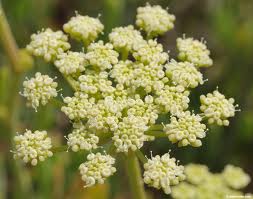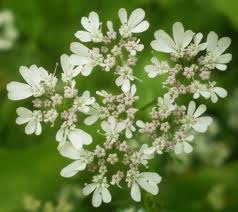Manzanita, Rose of Sharon, Tea, Campanula, Artichoke, Saffron, Samphire, Sage, Parsley, Common Mallow
Western states often seem to get short-changed in the foraging realm because most of the edible foreign weeds landed on the east coast. They’ve been slowly working their way west for centuries, which from a botanical point of view is a small amount of time. The West, however, has its own wild edibles including the Manzanita of the Arctostaphylos genus. Both Manzanitas and Bearberries are in the same genus. Of the Manzanitas several have flowers worthy of nibbling on including Arctostaphylos glauca, Arctostaphylos manzanita, Arctostaphylos nevadaensis, Arctostaphylos parryana, Arctostaphylos patula, Arctostaphylos pungens, and Arctostaphylos tomentosa. Besides the blossoms, the berries are edible as well.
South Korea is crazy about The Rose of Sharon, Hibiscus syriacus. It’s their national flower. The Blossom’s on everything, and it’s native to Korean and much of Asia. So why is it called syriacus, which means “from Syria.” They got it wrong a few centuries ago. They thought it was from Syria. Oddly mistakes like that cannot be changed. That it is wrong in not enough. There has to be a botanical reason to change a plant’s name once given, not a geographical one. Called mugunghwa in Korean — which translates into “flower of eternity” or something close to that — it has been a garden staple in that country since there were gardens hence the eternity spin. The leaves are made into tea and the flowers eaten, usually raw. The hibiscus made it to Europe by the 1500s and was in most English gardens by the 1700s. The American colonies followed suit. It’s also my mother’s favorite flower. Had to mention that or I wouldn’t hear the end of it.
Our next plant is known by billions. Wars were fought over it, an empire built and fortunes made, Camillia sinensis, better known as tea. Yep, the tea in your cup. When I first bought land I planted a C. sinensis knowing it was iffy. It was. Didn’t make it. Too warm, too humid. And it is an understatement to say tea change the course of history. Read about Robert Fortune in my article on Forsythia. He was sent by the British government to China, undercover, to steal tea seeds and the like to start a tea industry in India, a thef and resulting Indian tea industry that China has only recently surpassed. Besides a beverage, tea makes a marinade for fish and meat, mixed with anise blossoms it is used to make “tea eggs” which are tasty and wonderfully marbled (you crack the shells to pattern the eggwhite with brown lines.) Kombucha is basically tea cider, leaves are used to smoke meat, its fruits are eaten, leaves are chewed to remove the odor of garlic and onions, and the blossoms are cooked. One favorite way is to make tempura out of them, deep frying them.
Campanulas are not a small clan. There’s some 500 of them in the genus. Some are eaten for their roots, leaves or flowers. The rampion, or Campanula rapunculus was widly grown in Europe for its radish-like roots and leaves. In fact, “rapunculus” is Dead Latin for “little turnip” and was the Brothers Grimm’s inspiration for the fable name Repunzel. The Clustered Bellflower, Campanula glomerata, has bluish flowers that are eaten raw. They are sweet in flavor as are their leaves. Usually used in salads. Campanula punctata flowers and leaves are cooked like a potherb. Campanula rapunculoides, Rover Bellflower, roots and leaves are eaten (remember, in Dead Latin -oides means looks like or resembles. So the C. rapunculoides looks like the C. rapunculus.) In parts of Greece the Campanula versicolor, Variously Colored Bellflower, are eaten and cooked like a vegetable. The leaves are used in salads and taste similar to peas. The flowers are also very good.
If I don’t include artichokes among the edible flowers several will gleefully write and tell me I missed one. No doubt I have missed many. That said we really don’t eat the blossoms of the artichoke. They are actually bitter but if you want to have at it. We eat the floral bracts, read fat leaves below what will become the flower. We eat them raw, boiled, steamed, baked, fried, stuffed, and marinated. When marinated they are called artichokes hearts. In Europe they are dried and used in soups. The inner portion of the flower stalk is also edible, much like true thistles. The flowers themselves are used for a substitute for rennet, meaning they will curdle milk. I said they were bitter. Young artichoke leaves are fed to snails to improve their flavor. Yum. Artichokes have been around for a long time. Zeus (said Zeff in Greek) turned a scorned lover into an artichoke. It doesn’t pay to irritate a god. And young Norma Mortenson got her start in 1948 when she became the first “Artichoke Queen.” You know her as Marilyn Monroe
As of this writing the best price I can find on the Internet for saffron is $92.95 an ounce, free shipping, marked down from $144. Why is it expensive? Because “saffron” is the three red stigmas of the flower and must be picked by hand. Limited amount, labor intensive. It is the most costly spice by weight. Then again, one uses very little of it. Saffron is acually a crocus, Crocus sativus. It does not grow in the wild and is totally cultivated by man. Technically it is a monomorphic clone and believed to be a mutant form of Crocus cartwrightianus. The Greeks were the first to cultivate it, probably on Crete. Historians tell us it has been bought and sold for over four thousand years. Ninety percent of the world’s saffron comes from Iran. The styles are used to flavor and color sauces, creams, breads, preserves, curries, rice, soups, caked, puddings, eggs even butter and cheese. It can be a tea substitute and the roots roasted. It’s not a spice you keep on hand. Usually purchased for a dish specific. It takes about 13,125 dried stigmas to weigh an ounce. Oh, I forgot to mention: In large amounts saffron is deadly. That’s an expensive way to go.
I have a soft spot for edible plants that grow that can grow in salty places. They are usually fleshy, salty greens edible raw or cooked. A traditional seaside green is Samphire, Crithmum maritimum. At one time it was sold under the name of “Crest Marine.” It has fleshy, aromatic leaves that are spicy, peppery. The stems, leaves and pods can be pickled and the leaves are used fresh in salads. They can also be boiled as greens. In Italy and Greece the leaves are cut into small pieces, mixed with olive oil and lemon juice making a salad dressing. The raw blossom are used in salads. Very high in Vitamin C. The name, Samphire, is a French corruption of St. Pieere, (St. Peter) patron saint of fishermen.
Where would poultry seasoning be without sage? Or sage cheese? Or Paul Simon’s song Scarbrough Fair? Sage is used for seasoning meats, fowl, stuffings, soup, stews, sausages, sauce, beans, corn, mushrooms, and butter. Young leaves and flowers are eaten raw, boiled, pickled or on bread and butter sandwiches. Leaves are used to make a tea. Flowers can be sprinkled on salads to add color and flavor. It’s been in the kitchen and the herbalists medical kits for a long time. The Greeks were writing about sage some 2200 years ago. Sage blossoms are violet to blue, pink to white. They are not as strong flavored as the leaves. Botanically it is Salvia officinalis for the moment. There have been six attempts to change the name in the last 70 years. Though a native of the Mediterranean, it is naturalized in many northeastern states though it has a short growing season. Not the best performer either in the herb garden but a powerhouse in the kitchen.
Like so many of our spices Parsley is a native of the Mediterranean. While for this article we are interested in the flowers there are actually two major divisions within the parsley realm, leaves and roots. Among the leaves there is curly or flat leaf. Interestinlgy the flat leaf is closer to the wild parlsey than the curly. Flat leaf is easier to grow, more tolerant of agricultural abuses, and has a stronger flavor. Curly leaf is more decorative and milder in flavor. It is the one used mostly for a garnish. There is also a root parsley, not common outside of central and eastern Europe where it is used in soups and stews. It has a nutty celery/parsley taste and is often fried like potato chips. From Argentine salsa to a tea Vitamin C rich parsley has multifold uses in the kitchen. Even the stems can be dried and added to dishes. The blossoms are salad fare or can be added to anything the leaves are used for. Parsley, incidentally, means “forked turnip” though parsely and turnips are not related.
How many names does this mallow have? There’s Common Mallow, High Mallow, Tall mallow, Mauve des Bois, Cheeses, and botanically Malva Sylvestris, which means mallow of the woods. Native to western Europe as the plant moved with colonialists it picked up various names. It’s an annual in cool areas and a perennial in warmer areas. It is found in most states save the Old South and Nevada though it does grow in South Carolina. the mucilaginous leaves are eaten like spinach, added to soups to give them texture, or used to make a tea. Flowers are used like a vegetable or as a garnish. Unripe fruits are called cheese because they look like a small wheel of cheese. They are a nibble. Look for blossoms from June to September.













Thank you for another wonderful post. I live in the Californian Sierra nevada foothills. We have many different species of Manzanita growing from low to very high elevations. I can attest to the edibility and flavor of the flowers. The flowers are filled with nectar so they make a nice sweet treat, though they are rather small. The fruit is only good raw when it is green, it taste like a green apple. The mature fruit can be made into a ‘cider’ type drink.
Glad to know somebody else in the woods around here knows about manzanita besides the bears! Yum!
Thank you! I grew up eating ‘cheesies’, and finally found out what plant they are. ^_^
Quick correction: those “parsley” flowers are actually coriander flowers. REAL parsley flowers are far smaller and less showy and a shade of yellowish green.